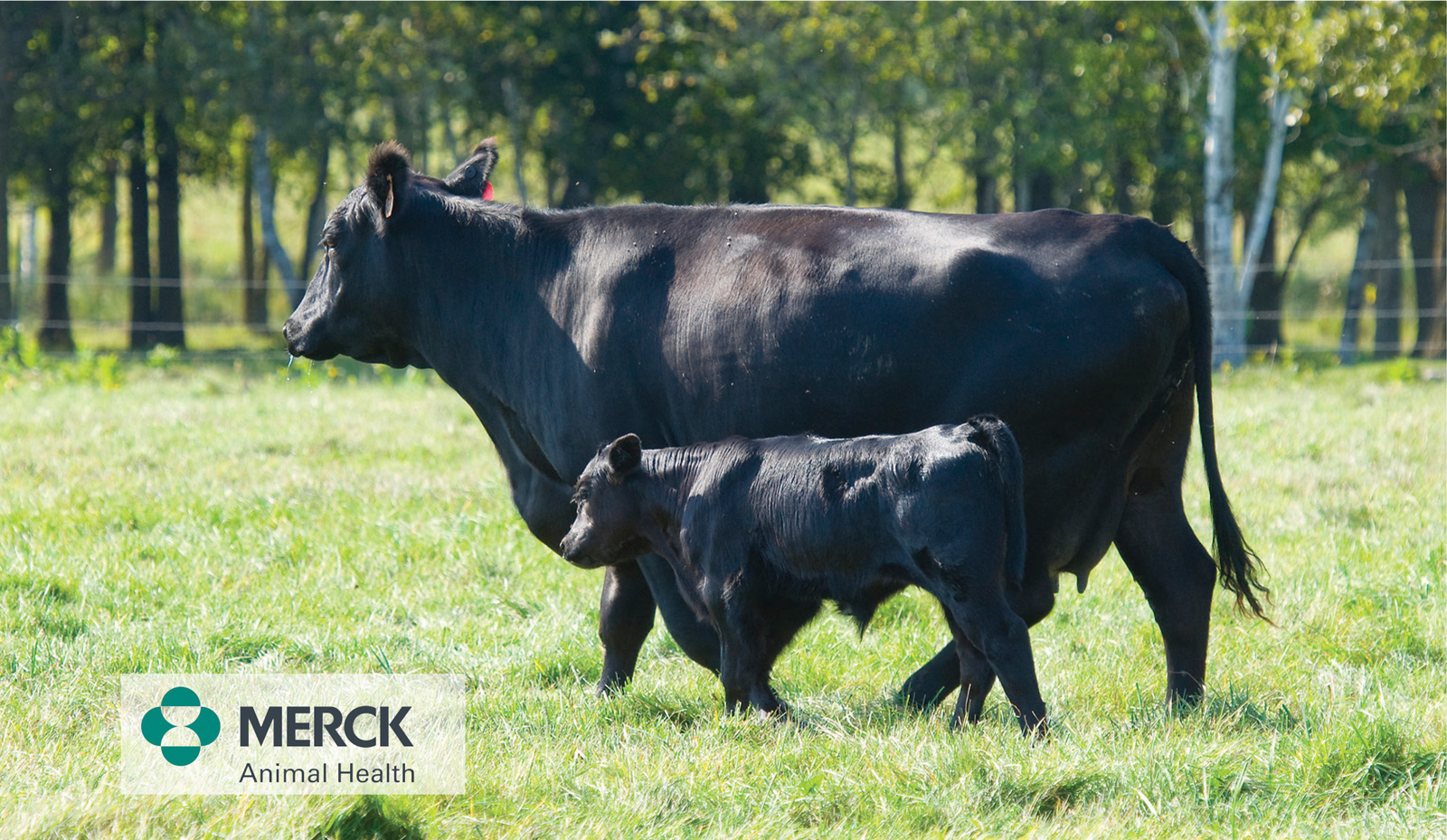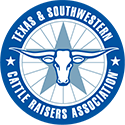Healthy Cows, Clean Pastures Equal Healthy Calves

By Ellen H. Brisendine
A healthy mother cow and a quiet, clean pasture go a long way in helping new calves withstand stress and avoid the setbacks of scours.
Dr. Guy Ellis, technical services veterinarian in the ruminant division of Merck Animal Health, says, “Disease prevention in newborn calves starts before that calf is born. The nutrition level of the cow or the heifer in that last trimester of gestation is very important for her, for her milk production for the calf, and for the baby calf itself in the form of its energy level once it’s born.
“When the calf hits the ground, it ideally needs to be full of energy and vigor to get up and nurse within the first 12 hours of life,” he says.
The first milk from the mother is the colostrum, which provides the antibodies the calf will need to resist disease. “That’s going to carry the calf the first 2 or 3 months of its life, allowing the calf to fight off diseases such as scours. If you want to reduce stress on a baby calf, make sure it gets up and nurses that colostrum.”
Ranchers who run spring calving herds may have some years when the calves come in cold, wet weather. We can’t do anything about weather patterns, but we can “provide a good calving environment,” Ellis says, “where the calf can be out of the weather as much as possible. A wet, cold calf is at high risk for developing disease because those conditions stress the immune system.”
A clean, quiet environment will support a strong, healthy calf, he says. “A very confined or highly concentrated calving area, where you have a lot of traffic and a lot of feces on the ground from the other cows, increases the chances of scours. Some of the pathogens that cause early onset scours in newborn babies are actually spread by the cow. The cow can have those normally in her gastrointestinal tract. She’s not sick from them, but the calf can get sick from them.”
Ellis quotes the adage, “‘The solution to pollution is dilution.’ The more we can spread these cows and the calves out in a pasture, the more we can lower the calf’s chances of encountering the pathogens.”
In many cases, when a cow-calf pair is turned into a clean, properly stocked pasture with plenty of forage and ample water, the cow’s natural mothering instinct will protect the calf from much exposure to pathogens.
Ellis explains, “When it’s born in a native pasture, a calf actually likes to stay in one spot. The mother will leave the calf, go out and graze and go to water and that calf will just bed down and prefer to stay in one spot.
“The cow will go back to that calf and let it nurse; the calf will learn where the nursing spot is and will lie right back down, usually in that area, and the cow will leave the calf lying right there. The point is, a calf hates change. It needs stability, especially in those first 2 or 3 weeks of life.”
Other stressors during those early weeks of life are dusty conditions, which can aggravate respiratory issues; parasites, such as flies; predators, such as coyotes loafing on the perimeter of the herd watching for an opportunity to pounce; and temperature fluctuations, such as hot days and cold nights. The early weeks of life can be challenging for a calf.
“Once they’re over a month to 2 months of age, it’s usually smooth sailing until weaning time,” Ellis says. “Then you have another whole batch of stressors to consider.”
Those other stressors are “ones that we have prepare the calf for, preferably pre-weaning,” Ellis says. “What I usually call ‘branding time,’ which is usually about 2 to 3 months old. Health-wise, those calves are usually about as strong as they can be. They’re not so big that they’re hard to handle, and this is the time that colostrum immunity is starting to wane, so their immune system needs a booster via vaccination.”
This is the time to castrate bull calves, dehorn as needed, brand, and vaccinate the calves. “At 2 to 3 months of age, if the calves are healthy, these procedures don’t seem to faze them that much. If you work quickly and efficiently, they can get back up and go right back to the mother cow and go back to nursing, and you hardly ever have issues with the health of those calves after the procedures. This initial vaccine begins to strengthen the immune system prior to the booster, preferably prior to weaning or at weaning, that will prepare these calves for the challenges they will face once weaned.”
Ellis encourages cattle raisers to work with a veterinarian to pick the right vaccines for your area and your herd health program.
Giving newborn calves a good start to a productive life begins with a healthy cow, a healthy environment and a herd health plan to support the calves’ immunity when they are about 2 to 3 months of age. The payoff for the herd owner is more pounds of cattle to sell.
“Either that calf is bigger, or you have more calves to sell,” Ellis says. “Pounds sell, so if you can raise more calves due to low-stress calving practices, if you vaccinate your calves to prevent health issues prior to weaning and after weaning, your bottom line improves. If you sell weaned calves and the buyer has a good experience with your calves, you get a good reputation and have a future potential buyer for the next year. If those calves don’t do well, your potential buyers go elsewhere. My main message to ranchers is that pounds sell, whether in the number of calves or the size of calves, and a good program helps both.”
Meet Dr. Guy Ellis
Guy Ellis has been with Merck Animal Health for nearly 5 years. Prior to that, he had a veterinary practice in the southeast Texas Panhandle, working with cow-calf and stocker clients.
He left private practice to take advantage of the research opportunities with Merck. “It has been a great opportunity to really focus on the beef industry and make an impact. I made an impact in my own little local world when I was in practice, but now I’m making an impact nationwide, not only with product development but research projects to help the beef industry for a long time.”
“Healthy Calves” is excerpted from the February 2018 issue of The Cattleman magazine.
